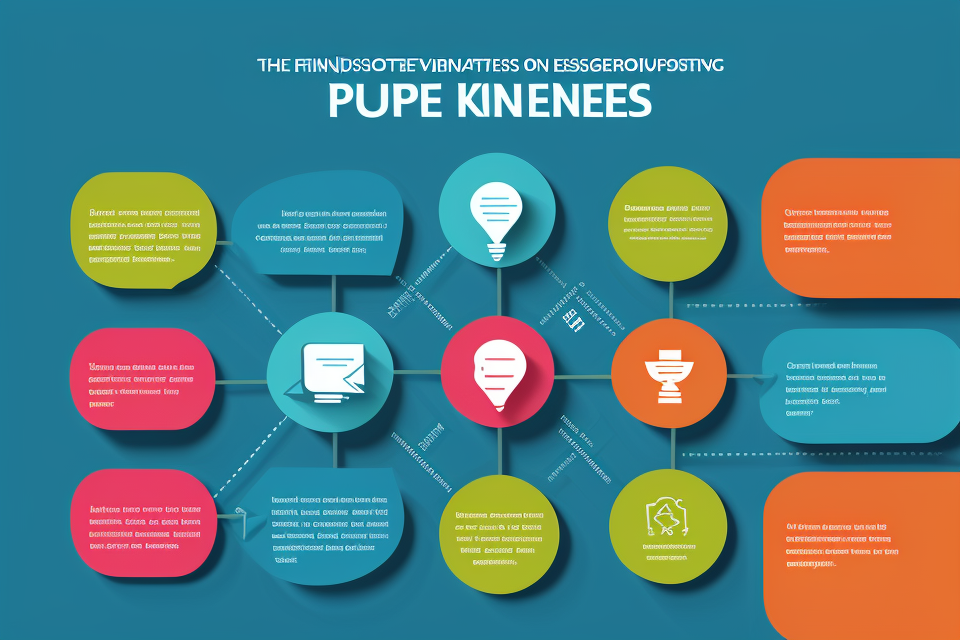Management is the art and science of getting things done through people. It involves planning, organizing, leading, and controlling resources to achieve organizational goals. Effective management is essential for the success of any organization, as it helps to ensure that resources are used efficiently and effectively. In this article, we will explore the definition, concepts, and principles of management, providing a comprehensive understanding of this critical business function. We will also discuss the different approaches to management and the skills required for effective management. Whether you are a seasoned manager or just starting out, this article will provide valuable insights into the world of management.
What is Management?
Definition of Management
Formal Definition
Management is the process of efficiently and effectively coordinating resources and personnel to achieve organizational goals and objectives.
Informal Definition
Management can be informally defined as the art and science of managing and leading people to achieve a common goal or objective. It involves the planning, organizing, leading, and controlling of resources and personnel to achieve desired outcomes.
In summary, management is a process that involves the use of knowledge, skills, and techniques to direct and control resources and personnel towards achieving specific goals and objectives.
Importance of Management
Management is the process of directing, coordinating, and controlling the resources of an organization towards achieving its goals and objectives. It involves planning, organizing, staffing, leading, and controlling the organization’s resources, including people, finances, materials, and technology.
In Organizations
Management is crucial in organizations as it helps to ensure that the organization’s resources are utilized effectively and efficiently. It helps to establish clear goals and objectives, allocate resources, and coordinate the efforts of employees towards achieving these goals. Effective management can lead to increased productivity, improved performance, and better outcomes for the organization.
In Society
Management is also important in society as it helps to ensure that resources are utilized effectively and efficiently. Effective management of public resources, such as healthcare and education, can lead to improved quality of life for citizens. It can also help to promote economic growth and development, create jobs, and improve the standard of living for individuals and communities. Additionally, good management practices can contribute to social and environmental sustainability, helping to preserve natural resources for future generations.
Management Concepts
classical management theory
Scientific Management
The classical management theory is a body of knowledge that focuses on the systematic study of management. It emerged in the late 19th and early 20th centuries, during the industrial revolution. The main objective of this theory is to improve the efficiency and productivity of organizations by applying scientific principles to management practices.
Administrative Management
Administrative management is a sub-discipline of the classical management theory that focuses on the management of organizations. It emphasizes the importance of systematic and efficient management practices to achieve organizational goals. Administrative management also stresses the need for standardization, centralization, and formalization of management processes.
modern management theory
Contingency Theory
Contingency Theory is a management approach that emphasizes the importance of situational factors in determining the best course of action. This theory suggests that there is no one-size-fits-all approach to management, and that managers must take into account various variables such as the organization’s structure, culture, and environment in order to make effective decisions.
Transformational Leadership Theory
Transformational Leadership Theory is a management approach that focuses on the leader’s ability to inspire and motivate their followers to achieve a shared vision. This theory suggests that leaders should focus on building trust and loyalty among their followers, rather than simply issuing commands or incentives. Transformational leaders are also known for their ability to communicate a clear and inspiring vision for the future, and for their ability to lead by example.
Management Principles
Henri Fayol’s 14 Principles of Management
Unity of Command
Unity of Command is one of the 14 principles of management proposed by Henri Fayol. This principle states that each employee should receive orders from only one superior. This principle ensures that there is a clear chain of command and that employees know who to report to and who to follow.
Unity of Direction
Unity of Direction is another principle proposed by Henri Fayol. This principle states that all employees should be working towards a common goal. This principle ensures that everyone in the organization is moving in the same direction and that there is a sense of unity among employees.
Subordination of Individual Interests to the General Interest
Subordination of Individual Interests to the General Interest is a principle proposed by Henri Fayol. This principle states that the interests of the individual employee should be subordinated to the interests of the organization as a whole. This principle ensures that employees are working for the good of the organization and not just for their own personal gain.
Peter Drucker’s Management Principles
Management by Objectives (MBO)
Management by Objectives (MBO) is a management principle that focuses on setting clear and specific goals for employees and ensuring that they are aligned with the overall objectives of the organization. The process involves a collaborative effort between managers and employees to set performance targets, establish timelines, and define the steps required to achieve the objectives. The key advantage of MBO is that it promotes employee engagement and motivation by giving them a sense of ownership over their work and the outcomes they produce. By aligning individual goals with organizational objectives, MBO fosters a shared understanding of the company’s mission and direction, enabling employees to work more effectively towards achieving the desired outcomes.
Decentralization and Delegation
Decentralization and delegation are two management principles that emphasize the distribution of decision-making authority and responsibility throughout an organization. Decentralization involves the transfer of decision-making power from the top-level management to lower levels of the organization, enabling employees closer to the work to make decisions and take ownership of their tasks. Delegation, on the other hand, involves the transfer of specific tasks or responsibilities from managers to their subordinates, allowing them to exercise their skills and expertise in carrying out the assigned tasks. Both decentralization and delegation aim to increase efficiency, enhance employee autonomy, and promote a more collaborative work environment. By empowering employees to make decisions and take ownership of their work, these principles enable organizations to respond more quickly to changing circumstances and customer needs.
Focus on Customer Needs
A focus on customer needs is a management principle that emphasizes the importance of understanding and meeting the requirements and expectations of customers. This principle advocates for a customer-centric approach to business, where organizations prioritize customer satisfaction and experience as key drivers of success. By focusing on customer needs, organizations can better understand their target market, develop products and services that meet their requirements, and create a positive brand image that fosters customer loyalty. This principle also encourages organizations to continuously gather feedback from customers and use it to inform their decision-making processes, enabling them to adapt and improve their offerings over time. A customer-focused approach to management helps organizations to stay competitive and responsive to market changes, ultimately driving long-term growth and success.
Management Styles
Autocratic Management Style
Characteristics
- The autocratic management style is characterized by a hierarchical structure where the manager has complete control over decision-making, communication, and tasks.
- The manager sets goals, defines tasks, and assigns roles to employees, who are expected to follow instructions without questioning.
- There is a lack of participation or input from employees in decision-making processes.
Advantages
- Clear roles and responsibilities are defined, resulting in a well-structured work environment.
- Tasks are completed efficiently due to clear instructions and direction from the manager.
- Employees may feel a sense of security in knowing what is expected of them.
Disadvantages
- Employees may feel micromanaged and have little room for creativity or growth.
- Decision-making can be slow and inefficient due to the centralization of power in the manager.
- There may be a lack of motivation and engagement from employees who are not involved in the decision-making process.
Democratic Management Style
- Democratic management style is a participatory and collaborative approach to decision-making, where managers involve employees in the decision-making process.
- It emphasizes the sharing of information, encouraging open communication, and creating a culture of trust and respect among team members.
-
It encourages participation from all team members, regardless of their position or level within the organization.
-
Increased employee engagement and job satisfaction due to a sense of ownership and involvement in decision-making.
- Improved decision-making through the consideration of multiple perspectives and ideas.
- Higher levels of innovation and creativity, as employees are encouraged to contribute their unique perspectives and ideas.
-
Better problem-solving, as employees are more likely to take ownership of finding solutions and implementing them.
-
Time-consuming, as it requires more participation and collaboration from all team members.
- Can be challenging to implement in organizations with a traditional hierarchical structure.
- May not be suitable for certain situations, such as emergencies or high-pressure situations, where quick decisions need to be made.
- Can lead to decision paralysis if not managed effectively, as too many opinions and perspectives can lead to indecision.
Laissez-Faire Management Style
The laissez-faire management style is a hands-off approach to leadership where the manager takes a back seat and allows their team to make decisions and solve problems on their own. This style is also known as “hands-off” or “non-directive” management.
- Empowers team members to take ownership and responsibility for their work
- Encourages creativity and innovation
- Allows for flexible decision-making and problem-solving
-
Can lead to increased job satisfaction and motivation among team members
-
May lead to a lack of direction and guidance for team members
- Can result in poor communication and coordination within the team
- May not be suitable for complex or high-pressure situations
- Can result in a lack of accountability and responsibility among team members if not managed properly.
Management Functions
Planning
Steps in the Planning Process
- Establishing Objectives: This involves setting clear and specific goals for the organization, which can be measured and evaluated over time. This step is crucial as it provides direction and purpose for the organization.
- Gathering Information: This involves collecting data and information related to the internal and external environment of the organization. This can include market research, customer feedback, financial data, and employee surveys.
- Forecasting: This involves analyzing the gathered information to identify trends, opportunities, and threats. This step helps organizations to anticipate future events and make informed decisions.
- Developing Strategies: This involves creating plans and actions to achieve the established objectives. This step requires a careful analysis of the strengths, weaknesses, opportunities, and threats of the organization.
- Implementing Plans: This involves putting the strategies into action. This step requires effective communication, coordination, and delegation of tasks to ensure the successful execution of the plans.
- Monitoring and Controlling: This involves regularly reviewing and evaluating the progress of the plans. This step allows organizations to make necessary adjustments and take corrective actions to ensure the success of the plans.
Techniques in Planning
- SWOT Analysis: This technique involves analyzing the strengths, weaknesses, opportunities, and threats of the organization. It helps organizations to identify their internal and external environment and make informed decisions.
- PESTLE Analysis: This technique involves analyzing the political, economic, social, technological, legal, and environmental factors that may impact the organization. It helps organizations to anticipate future events and make informed decisions.
- Scenario Planning: This technique involves creating multiple scenarios based on different assumptions about the future. It helps organizations to prepare for different possible outcomes and make informed decisions.
- Strategic Planning: This technique involves creating a long-term plan for the organization, which includes the vision, mission, and goals. It helps organizations to align their resources and actions towards achieving their objectives.
- Business Model Canvas: This technique involves creating a visual representation of the key elements of the organization’s business model, including the value proposition, customer segments, revenue streams, and cost structure. It helps organizations to understand their business model and make informed decisions.
Organizing
Organizing is one of the core functions of management, which involves arranging the resources of an organization in a systematic manner to achieve the desired goals. It includes defining the structure of the organization, assigning tasks and responsibilities to individuals, and establishing communication and coordination mechanisms among different departments and employees.
Characteristics of an Effective Organizational Structure
An effective organizational structure is characterized by the following features:
- Clear lines of authority and responsibility
- Specialization of tasks and responsibilities
- Flexibility to adapt to changes in the environment
- Coordination and communication among different departments and employees
- Balance between centralization and decentralization
Types of Organizational Structure
There are several types of organizational structures, including:
- Functional structure: This structure is based on the functional areas of the organization, such as marketing, finance, and production. Each department is headed by a manager who is responsible for overseeing the activities of that department.
- Divisional structure: This structure is based on the products or services offered by the organization. Each division is headed by a manager who is responsible for overseeing the activities of that division.
- Matrix structure: This structure combines the functional and divisional structures, with employees reporting to both a functional manager and a divisional manager.
- Network structure: This structure is characterized by outsourcing and contracting relationships with other organizations, rather than having in-house departments.
Effective organizing requires careful consideration of the organization’s goals, resources, and environment, as well as the skills and abilities of its employees. By establishing a clear and effective organizational structure, managers can improve efficiency, productivity, and overall performance of the organization.
Leading
Qualities of an Effective Leader
An effective leader possesses several essential qualities that enable them to lead their team members towards achieving the organization’s goals. These qualities include:
- Vision: A leader should have a clear vision of where they want the organization to go and how they plan to get there. They should be able to communicate this vision to their team members and inspire them to work towards achieving it.
- Integrity: A leader should be honest, ethical, and have strong moral principles. They should lead by example and be accountable for their actions.
- Empathy: A leader should be able to understand and appreciate the perspectives of their team members. They should be able to empathize with their team members and be able to create a supportive and inclusive work environment.
- Communication: A leader should be an effective communicator. They should be able to communicate their ideas and vision clearly and effectively to their team members. They should also be able to listen actively and provide feedback constructively.
- Decisiveness: A leader should be able to make decisions quickly and confidently. They should be able to assess the situation, weigh the pros and cons, and make a decision that is in the best interest of the organization.
Types of Leadership Styles
There are several leadership styles that a leader can adopt, depending on the situation and the team members they are leading. Some of the most common leadership styles include:
- Autocratic Leadership: In this style, the leader makes all the decisions and expects their team members to follow their instructions without questioning. This style is effective in situations where there is a clear hierarchy and the team members are not experienced.
- Democratic Leadership: In this style, the leader involves their team members in the decision-making process. They encourage participation and collaboration and consider the opinions of their team members before making a decision. This style is effective in situations where the team members are experienced and have a lot of knowledge to contribute.
- Laissez-faire Leadership: In this style, the leader takes a hands-off approach and allows their team members to make decisions on their own. This style is effective in situations where the team members are experienced and can work independently.
- Transformational Leadership: In this style, the leader inspires and motivates their team members to achieve their full potential. They focus on the big picture and are visionary in their approach. This style is effective in situations where the team members need to be inspired and motivated to achieve their goals.
Controlling
Controlling is one of the four key functions of management, which involves monitoring and evaluating the performance of an organization to ensure that it is in line with its goals and objectives. This function involves measuring the performance of the organization, comparing it with the set standards, and taking corrective action as necessary.
Steps in the Controlling Process
The controlling process involves several steps, which are as follows:
- Establishment of Standards: The first step in the controlling process is to establish standards against which performance can be measured. These standards can be in the form of goals, targets, or benchmarks.
- Measurement of Performance: The next step is to measure the actual performance of the organization against the established standards. This can be done through various tools such as financial statements, performance reports, and statistical analysis.
- Comparison of Performance: Once the performance has been measured, it is compared with the established standards to identify any deviations or variances.
- Identification of Deviations: If there are any deviations or variances, the next step is to identify the reasons behind them. This can be done through root cause analysis, which involves identifying the underlying causes of the deviations.
- Taking Corrective Action: Once the reasons for the deviations have been identified, corrective action is taken to address the issues. This can involve making changes to the organizational structure, processes, or policies.
Techniques in Controlling
There are several techniques that can be used in the controlling process, which are as follows:
- Financial Ratio Analysis: This technique involves analyzing financial statements to evaluate the performance of the organization. Financial ratios such as the debt-to-equity ratio, return on investment, and profit margin can be used to evaluate the financial performance of the organization.
- Variance Analysis: This technique involves comparing actual performance with the budgeted or standard performance to identify variances. Variances can be analyzed by department, product, or activity, and corrective action can be taken accordingly.
- Break-Even Analysis: This technique involves calculating the point at which the organization will break even, i.e., when it will cover all its costs and start making a profit. This analysis can help the organization to determine the price at which it needs to sell its products or services to break even.
- Management by Objectives (MBO): This technique involves setting specific objectives for each employee or department and monitoring their progress towards achieving those objectives. This technique can help to align individual goals with organizational goals and improve performance.
Overall, controlling is an essential function of management that helps organizations to monitor and evaluate their performance and take corrective action as necessary. By using various techniques such as financial ratio analysis, variance analysis, break-even analysis, and management by objectives, organizations can improve their performance and achieve their goals and objectives.
FAQs
1. What is management?
Management is the process of planning, organizing, leading, and controlling resources to achieve specific goals and objectives. It involves coordinating and overseeing the activities of an organization to ensure that it operates efficiently and effectively.
2. What are the key concepts of management?
The key concepts of management include planning, organizing, leading, and controlling. These concepts are often referred to as the management functions or processes, and they help managers to define goals, allocate resources, organize tasks, motivate employees, and monitor performance.
3. What are the principles of management?
The principles of management are guidelines or rules that managers use to make decisions and take actions. Some of the key principles of management include the division of work, authority, discipline, and unity of command. These principles are designed to help managers create a stable and efficient work environment.
4. What is the difference between management and leadership?
Management is the process of coordinating and controlling resources to achieve specific goals, while leadership involves inspiring and motivating people to work towards a common vision. Although management and leadership are closely related, they are not the same thing.
5. What are the different types of management?
There are several different types of management, including operational management, strategic management, financial management, and human resource management. Each type of management focuses on different aspects of an organization’s operations and goals.
6. What skills are needed to be a good manager?
Good managers need a range of skills, including communication, problem-solving, decision-making, delegation, and the ability to motivate and inspire others. They also need to be able to plan and organize effectively, and to have a good understanding of business principles and practices.
7. How does technology impact management?
Technology has a significant impact on management, as it can help managers to automate tasks, streamline processes, and access and analyze data more efficiently. However, technology can also present challenges, such as the need to keep up with new developments and the potential for employees to become overly reliant on technology.
8. What is the importance of ethics in management?
Ethics play an important role in management, as they help managers to make decisions that are fair, honest, and respectful of others. Ethical behavior also helps to build trust and credibility with employees, customers, and other stakeholders.
9. How does globalization impact management?
Globalization has a significant impact on management, as it creates new opportunities and challenges for organizations. Managers need to be able to navigate cultural differences, adapt to changing market conditions, and manage diverse teams.
10. What is the future of management?
The future of management is likely to involve the continued use of technology, the need to adapt to changing market conditions, and the importance of developing strong leadership and communication skills. Managers will also need to be able to balance the needs of different stakeholders and navigate complex global issues.



